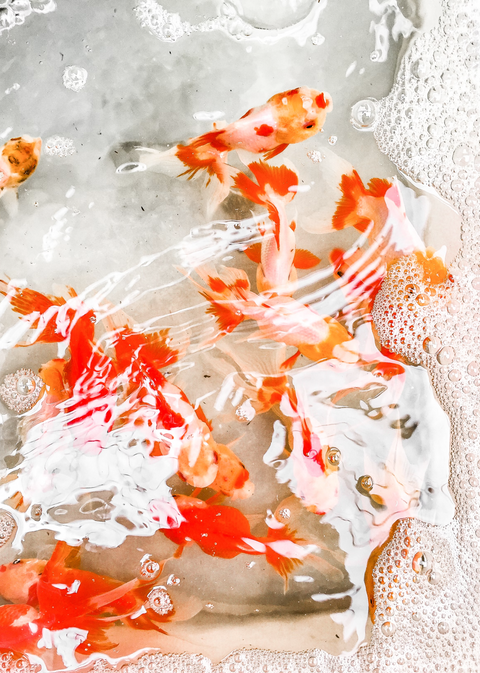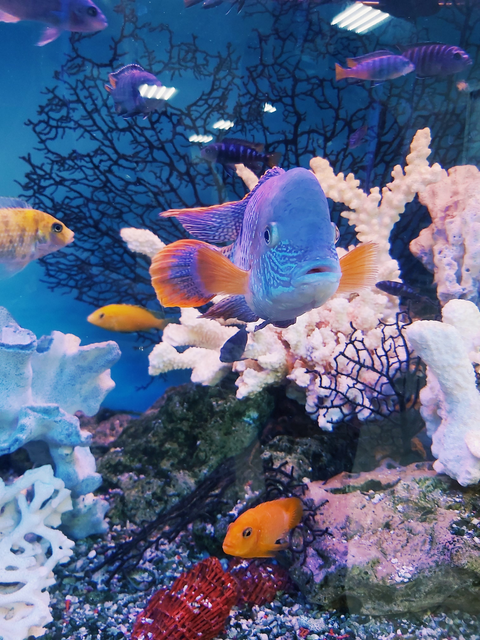Aquascaping is the art of designing and arranging aquatic plants, rocks, and other elements in an aquarium to create a visually appealing underwater landscape. For beginners, the first step is choosing a theme, such as a lush jungle, a rocky desert, or a minimalist design. Select the right plants and substrates to match your vision, and ensure proper lighting to promote plant growth. Take your time to experiment with layouts before filling the tank with water, and remember to cycle your aquarium to establish a healthy ecosystem for your aquatic inhabitants.
Top 10 Freshwater Fish for Your Home Aquarium Freshwater fish offer a wide variety of colors, shapes, and personalities, making them perfect for home aquariums. Some beginner-friendly options include neon tetras, guppies, bettas, mollies, and platies. For a touch of uniqueness, consider adding corydoras catfish, dwarf gouramis, or cherry barbs. These fish are hardy, relatively low-maintenance, and compatible with many other species. Always research each fish’s specific needs and compatibility before adding them to your tank to ensure a peaceful and thriving community.
The Art of Aquatic Plant Care: Tips for Thriving Underwater Gardens Aquatic plants not only enhance the aesthetics of your aquarium but also provide oxygen and shelter for your fish. To keep them healthy, ensure adequate lighting—LED or fluorescent lights work well for most plants. Use nutrient-rich substrates and consider adding liquid fertilizers or CO2 systems for faster growth. Regularly prune overgrown leaves to maintain the desired shape and prevent algae buildup. With the right care, your underwater garden will flourish.
Saltwater vs. Freshwater Aquariums: Which Is Right for You? Deciding between a saltwater and freshwater aquarium depends on your preferences, budget, and experience level. Freshwater tanks are typically easier to set up and maintain, making them ideal for beginners. Saltwater aquariums, while more challenging, offer vibrant marine life such as clownfish, tangs, and corals. Consider the time and effort you’re willing to invest, as well as the equipment and space required for each type. With careful planning, either option can become a stunning centerpiece in your home.
Common Mistakes Every Aquarist Should Avoid Many beginners make avoidable mistakes that can harm their fish and plants. Overfeeding is a common issue, leading to poor water quality and algae growth. Always feed small portions and remove uneaten food. Neglecting regular water changes can also cause toxic buildups, so aim for weekly changes of 10-20%. Another mistake is adding too many fish at once or mixing incompatible species, which can lead to stress and aggression. Research thoroughly and take your time to build a balanced aquarium.
The Ultimate Guide to Aquarium Filtration Systems A good filtration system is crucial for maintaining clean water and a healthy environment in your aquarium. Three main types of filters include mechanical, biological, and chemical. Mechanical filters remove debris, biological filters house beneficial bacteria that break down waste, and chemical filters remove toxins and odors. Popular options include hang-on-back filters, canister filters, and sponge filters. Choose a filter based on your tank size, stocking level, and budget to ensure optimal performance.
Feeding Your Fish: A Complete Nutrition Guide Providing proper nutrition is essential for keeping your fish healthy and vibrant. Research the dietary needs of your fish species—some thrive on flakes or pellets, while others require live, frozen, or freeze-dried food. Feed small amounts twice a day, ensuring all food is consumed within 2-3 minutes. Overfeeding can lead to obesity and poor water quality, so always moni





Comments (0)
There are no comments for this article. Be the first one to leave a message!